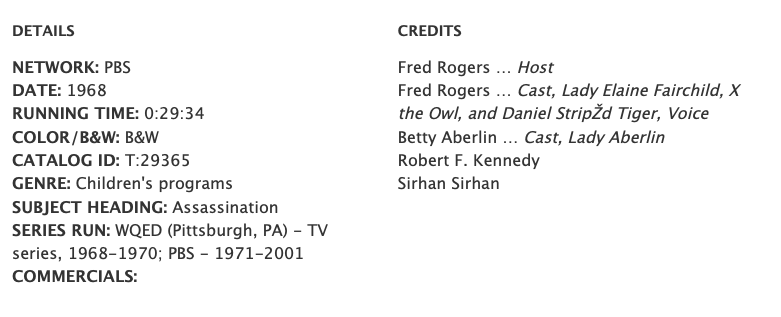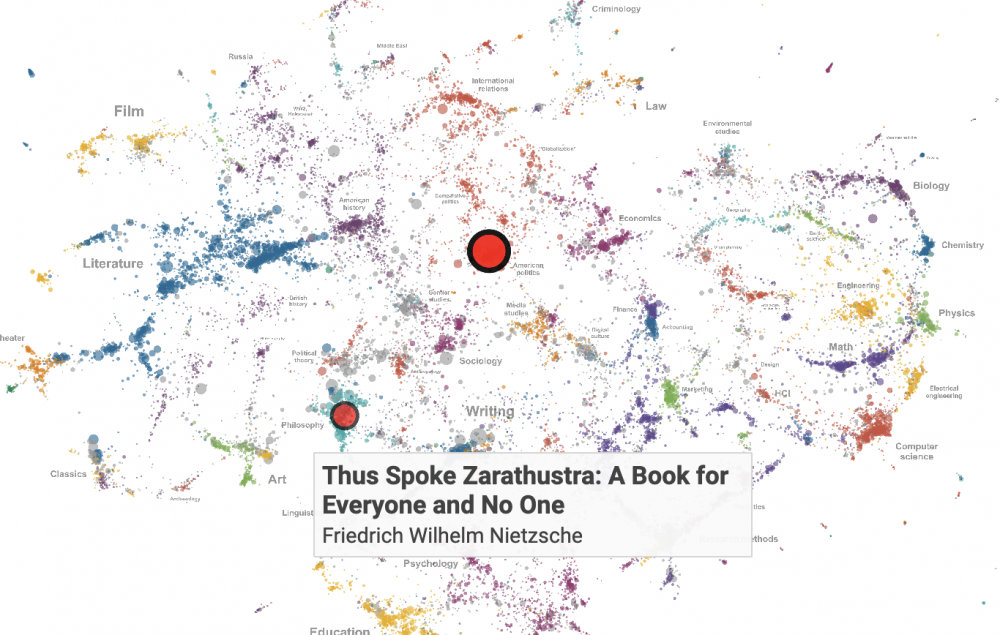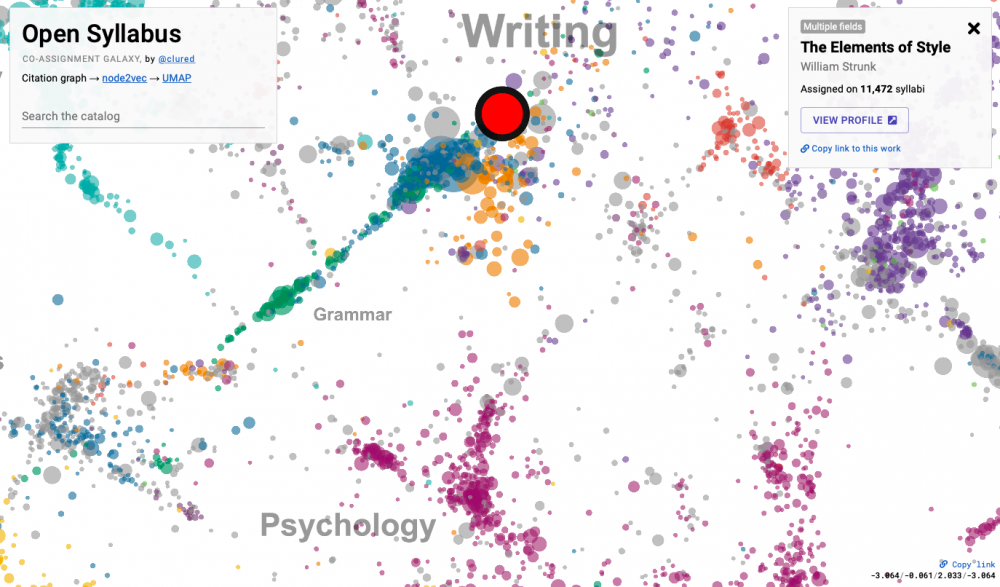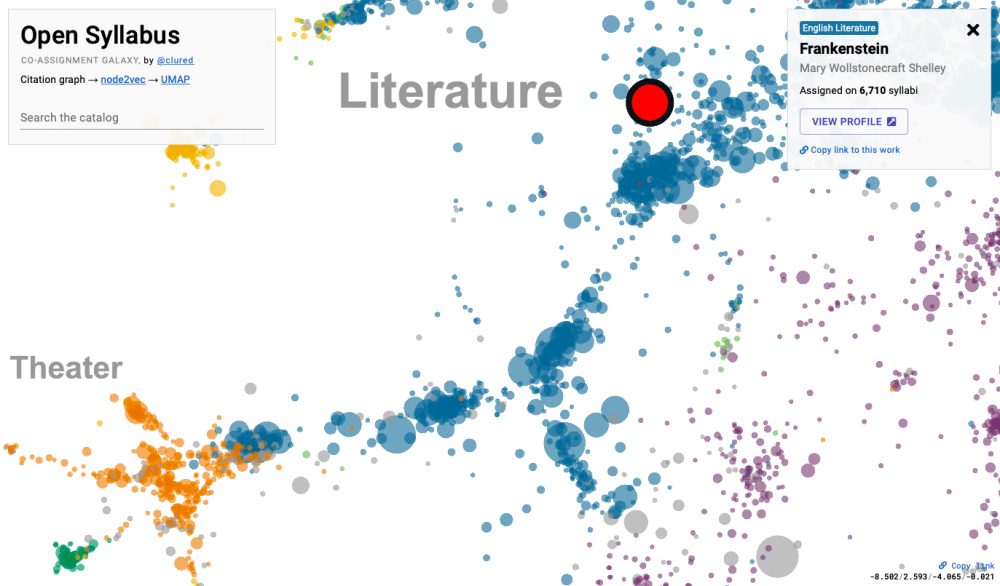[Most Recent Entries] [Calendar View]
Monday, July 22nd, 2019
| Time | Event |
| 8:00a | What Happens When Artificial Intelligence Listens to John Coltrane’s Interstellar Space & Starts to Create Its Own Free Jazz Some enjoy free jazz as soon as they first hear it; others think it sounds like music from an alien civilization, a listening experience fit only for a jazz fan as high as a kite. But how about as high as a space probe? Outerhelios, a 24/7 stream of artificial intelligence-generated free jazz, comes designed for broadcast into outer space by Dadabots, a collaboration between musicians-turned-programmers CJ Carr and Zack Zukowski (or, according to their about page, "a cross between a band, a hackathon team, and an ephemeral research lab"). Having previously built an AI-generated death metal stream (about whose creation you can read in this computer science paper), they've looked to the skies and trained their neural network on John Coltrane's Interstellar Space. "These duets between Coltrane on tenor (and bells) and Rashied Ali on drums sound like an annoyance until you concentrate on them," writes Robert Christgau in his original review of the 1974 album, "at which point the interactions take on pace and shape." The neural network "listened to the album 16 times," says the official Databots description on the Outerhelios stream, "then continued to make music in the style." The project draws inspiration from NASA's probes Voyager 1 and 2, which "launched in 1977 carrying a mixtape Carl Sagan made called The Sounds of Earth. It featured Blind Willie Johnson, Chuck Berry, recordings of laughter, Beethoven, Bach, Stravinsky, along with diagrams of human reproductive organs," all "intended for an audience of intelligent extraterrestrial lifeforms." Whereas The Sounds of Earth "used a static music format previously recorded by people," Outerhelios follows on Brian Eno's ideas about generative music by inventing a Coltrane album that never sounds the same twice. "For a few minutes, it’ll produce plausible-sounding free jazz," writes Futurism.com's Jon Christian. "Then the drums will segue into an inhuman trill, or the horns will disintegrate into a cacophonous wash of sound. Let’s just say that it’s not your dad’s jazz" — even if your dad happens to be John Coltrane, or indeed Brian Eno. But perhaps it will give NASA just the inspiration it needs to get the next Voyager launched. The sound of the original Interstellar Space got Christgau thinking beyond nations: "European, Oriental, African — I don't know. But amazing." Could the likes of Outerhelios get us thinking beyond the solar sytem? Related Content: Hear the Declassified, Eerie “Space Music” Heard During the Apollo 10 Mission (1969) Artificial Intelligence Program Tries to Write a Beatles Song: Listen to “Daddy’s Car” Space Jazz, a Sonic Sci-Fi Opera by L. Ron Hubbard, Featuring Chick Corea (1983) Based in Seoul, Colin Marshall writes and broadcasts on cities, language, and culture. His projects include the book The Stateless City: a Walk through 21st-Century Los Angeles and the video series The City in Cinema. Follow him on Twitter at @colinmarshall, on Facebook, or on Instagram. What Happens When Artificial Intelligence Listens to John Coltrane’s Interstellar Space & Starts to Create Its Own Free Jazz is a post from: Open Culture. Follow us on Facebook, Twitter, and Google Plus, or get our Daily Email. And don't miss our big collections of Free Online Courses, Free Online Movies, Free eBooks, Free Audio Books, Free Foreign Language Lessons, and MOOCs. |
| 11:00a | Mister Rogers Creates a Prime Time TV Special to Help Parents Talk to Their Children About the Assassination of Robert F. Kennedy (1968) Nearly three minutes into a patient blow-by-blow demonstration of how breathing works, Fred Rogers’ timorous hand puppet Daniel Striped Tiger surprises his human pal, Lady Aberlin, with a whammy: What does assassination mean? Her answer, while not exactly Webster-Merriam accurate, is both considered and age-appropriate. (Daniel's forever-age is somewhere in the neighborhood of four.) The exchange is part of a special primetime episode of Mister Rogers' Neighborhood, that aired just two days after Senator Robert F. Kennedy’s assassination. Rogers, alarmed that America’s children were being exposed to unfiltered descriptions and images of the shocking event, had stayed up late to write it, with the goal of helping parents understand some of the emotions their children might be experiencing in the aftermath:
Rogers was careful to note that not all children process scary news in the same way. To illustrate, he arranged for a variety of responses throughout the Land of Make Believe. One puppet, Lady Elaine, is eager to act out what she has seen: "That man got shot by that other man at least six times!” Her neighbor, X the Owl, doesn't want any part of what is to him a frightening-sounding game. And Daniel, who Rogers’ wife Joanne intimated was a reflection "the real Fred,” preferred to put the topic on ice for future discussions—a luxury that the grown up Rogers would not allow himself. The episode has become notorious, in part because it aired but once on the small screen. (The 8-minute clip at the top of the page is the longest segment we were able to truffle up online.) Writer and gameshow historian Adam Nedeff watched it in its entirety at the Paley Center for Media, and the detailed impressions he shared with the Neighborhood Archive website provides a sense of the piece as a whole. Meanwhile, the Paley Center’s catalogue credits speak to the drama-in-real-life immediacy of the turnaround from conception to airdate:
Above is some of the footage Rogers feared unsuspecting children would be left to process solo. Readers, are there any among you who remember discussing this event with your parents... or children? Ever vigilant, Rogers returned in the days immediately following the 2001 attack on the World Trade Center, with a special message for parents who had grown up watching him. Related Content: Mr. Rogers’ Nine Rules for Speaking to Children (1977) All 886 episodes of Mister Roger’s Neighborhood Streaming Online (for a Limited Time) Ayun Halliday is an author, illustrator, theater maker and Chief Primatologist of the East Village Inkyzine. Join her in NYC on Monday, September 9 for another season of her book-based variety show, Necromancers of the Public Domain. Follow her @AyunHalliday. Mister Rogers Creates a Prime Time TV Special to Help Parents Talk to Their Children About the Assassination of Robert F. Kennedy (1968) is a post from: Open Culture. Follow us on Facebook, Twitter, and Google Plus, or get our Daily Email. And don't miss our big collections of Free Online Courses, Free Online Movies, Free eBooks, Free Audio Books, Free Foreign Language Lessons, and MOOCs. |
| 3:26p | A New Interactive Visualization of the 165,000 Most-Frequently Assigned Texts in College Courses
For some of us, it’s been a little while since college days. For others of us, it’s been a little while longer. We might find ourselves asking, if we hear news of on-campus activism and unrest (surely unheard of in our day)— “Do they still read the classics down at old Alma Mater U.?” Maybe that’s the problem, eh? Too much Marxist theory, not enough Plato? Well, you may be pleased, or not, to learn that classics still regularly—routinely, even—appear on college syllabi, including both The Republic and the Communist Manifesto, in courses taught all over the world, from San Antonio to Tokyo to Karlskrona, Sweden. As we informed Open Culture readers in 2016, Columbia University’s Open Syllabus Project culled data from over 1,000,000 syllabi from university websites worldwide, to find out which books have been most frequently taught over the past decade or so. Since then, that number has risen to 6,000,000 syllabi. Still, the most-taught books at the top of the list remain largely unchanged.
As two of the project’s directors pointed out soon after the site’s launch, “traditional Western canon dominates the top 100, with Plato’s Republic at No. 2, The Communist Manifesto at No. 3, and Frankenstein at No. 5, followed by Aristotle’s Ethics, Hobbes’s Leviathan, Machiavelli’s The Prince, [Sophocles’] Oedipus and [Shakespeare’s] Hamlet.” These numbers have moved a little, edged downward by writing and research guides, but not by very much. William Strunk's classic writing guide Elements of Style sits at number one. Other top titles include calculus and anatomy textbooks, other works of Enlightenment philosophy, and texts now central to the Western critical tradition like Martin Luther King, Jr.’s “Letter from Birmingham Jail,” Michel Foucault’s Discipline and Punish, and Edward Said’s Orientalism. The top 50 is almost totally dominated by male writers, though some of the most frequently-taught novelists include Jane Austen, Toni Morrison, Anne Moody, Leslie Marmon Silko, and Alice Walker. The most-taught books tend to fall into either philosophy, literature, textbook, or guidebook, but the overall range in this list of 165,000 texts encompasses the entire scope of academia around the globe, with more contemporary study areas like gender studies, media studies, digital culture, and environmental studies prominent alongside traditional departments like physics and psychology.
A new interactive visualization from Open Syllabus turns this trove of data into a color-coded stippling of different-sized dots, each one representing a particular text. Float over each dot and a box appears in the corner of the screen, showing the number of syllabi that have assigned the text, and a link to a profile page with more detailed analysis. Called the “Co-Assignment Galaxy,” the infographic does what a list cannot: draws connections between all these works and their respective fields of study. The Open Syllabus Project was already an impressive achievement, a huge aggregation of freely accessible data for scholars and curious laypeople alike. The addition of this user-friendly cluster map makes the site an even more indispensable resource for the study of how higher education has changed over the past decade or so, and how it has, in some respects, remained the same. Enter the Open Syllabus Project's Co-Assignment Galaxy map here. Related Content: The 20 Most Influential Academic Books of All Time: No Spoilers Josh Jones is a writer and musician based in Durham, NC. Follow him at @jdmagness A New Interactive Visualization of the 165,000 Most-Frequently Assigned Texts in College Courses is a post from: Open Culture. Follow us on Facebook, Twitter, and Google Plus, or get our Daily Email. And don't miss our big collections of Free Online Courses, Free Online Movies, Free eBooks, Free Audio Books, Free Foreign Language Lessons, and MOOCs. |
| << Previous Day |
2019/07/22 [Calendar] |
Next Day >> |







